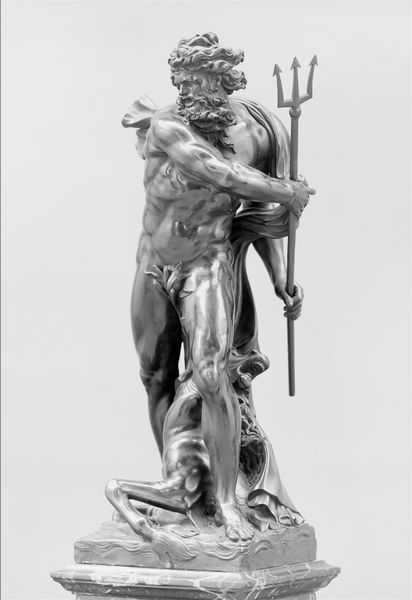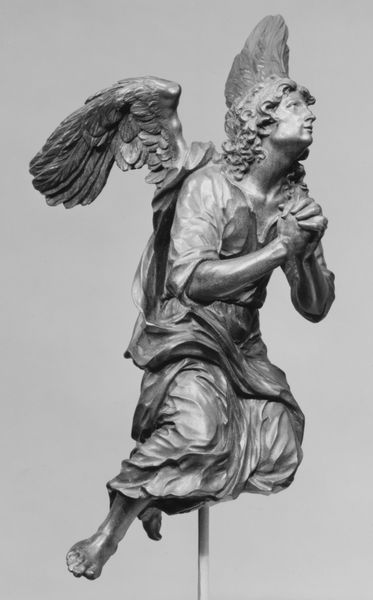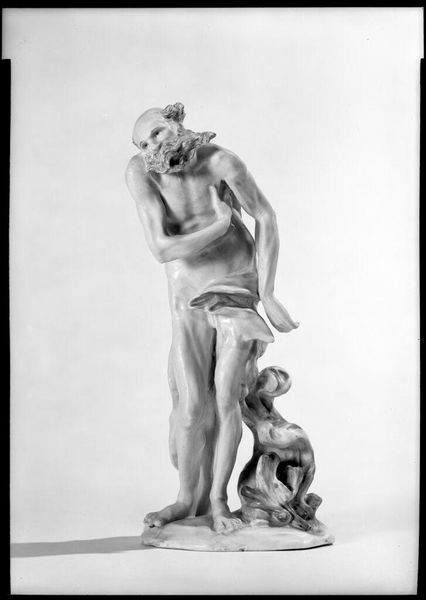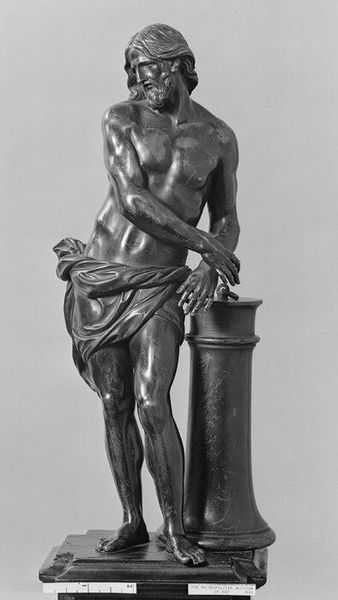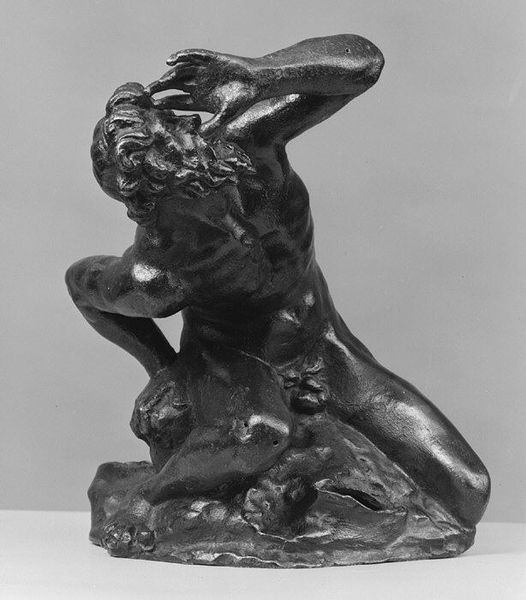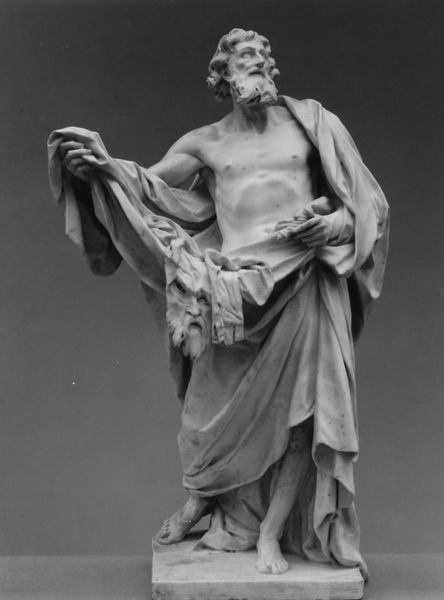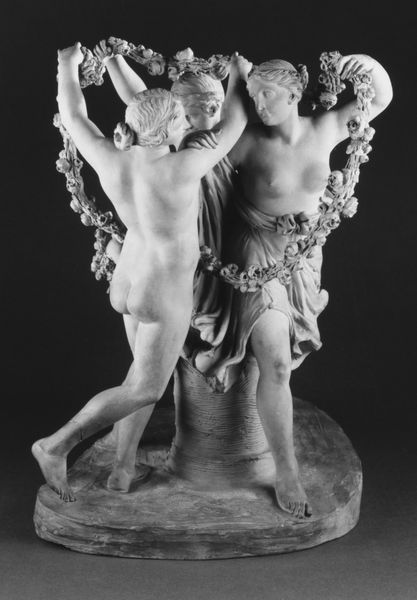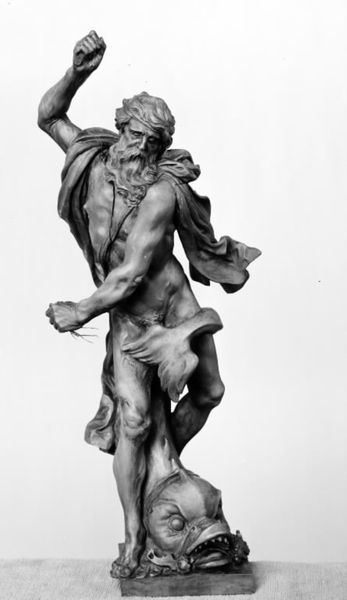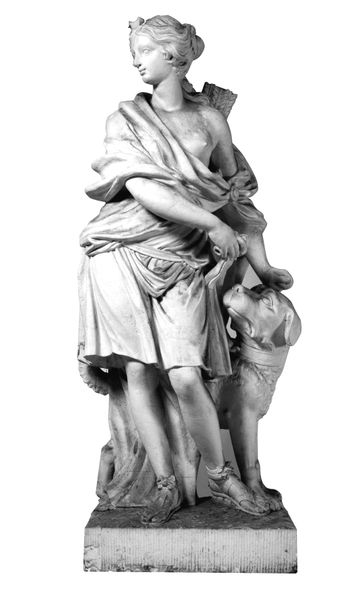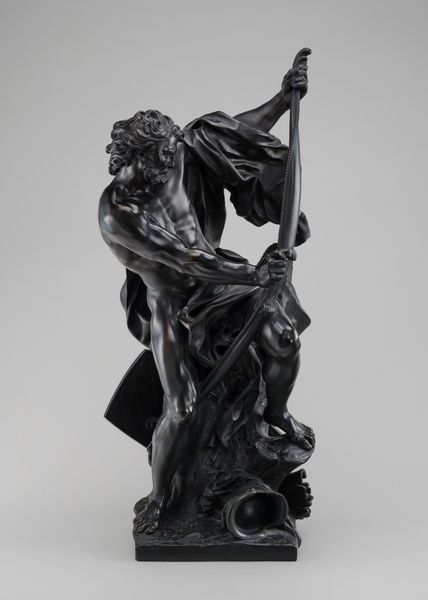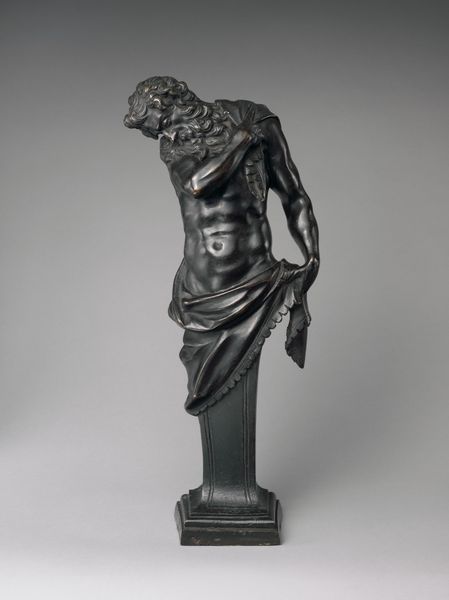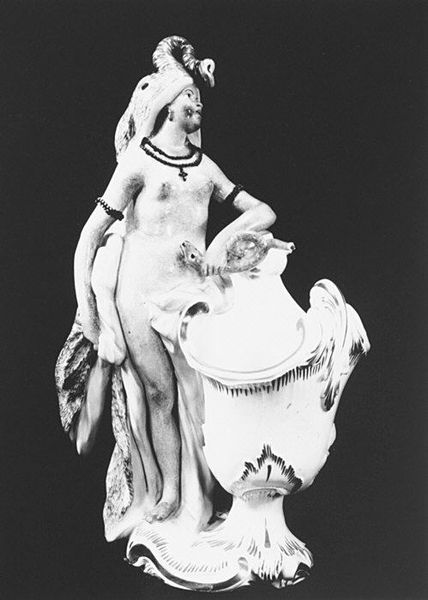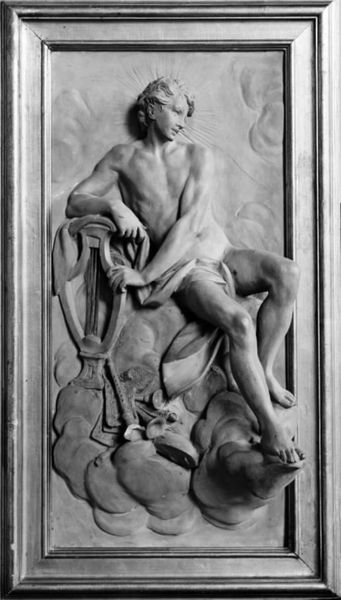
sculpture, wood
#
portrait
#
baroque
#
sculpture
#
figuration
#
sculpture
#
vertical object
#
wood
#
decorative-art
#
angel
Dimensions: Height: 21 in. (53.3 cm)
Copyright: Public Domain
Curator: Here we have one of a pair of wooden Angel sculptures, believed to be the work of Hendrik-Frans Verbruggen and dating from the late 17th or early 18th century. Immediately, the intricate detail is striking. It gives the angel an almost unsettling sense of life. Editor: Unsettling, perhaps, but to me, it conveys a very specific type of piety, and of suffering—look at the way his hands are clasped. We can see the artist has truly considered this piece in its decorative function. It’s less about divine intervention and more about the daily construction of devotion. Curator: You've touched upon something crucial there: devotion. Consider the historical backdrop. These sculptures emerged from a society deeply entwined with religious institutions. How might societal power dynamics influence the portrayal of these divine figures? We see Baroque art of this period constantly deployed in a project of Counter-Reformation messaging. Editor: Absolutely. We must consider where this object sat and for what purpose it was made. It speaks volumes about the religious craftsmanship of the period, particularly its place in an economy steeped in this type of Catholic iconography. This angel’s body becomes just another component in its crafting—the drapery, wings, all finely carved and considered as one unified object. Curator: And how does that objectification play out in relation to gender? The angel's delicate features, the soft curves – they seem to embody a feminized ideal, subtly reinforcing a particular vision of spiritual grace within patriarchal norms. Is this a conscious choice, or simply a reflection of the artist's own biases and expectations? Editor: We shouldn't discount the guild structures of the time, or even workshop access: whose labor was actually at work in carving the angel's 'delicate' features? How did labor and materials influence not just the production of this angel but also its consumption? Curator: Exactly! Art, power, labor, materials--all deeply entwined. Examining these Angels reminds us that art doesn't exist in a vacuum. It reflects, reinforces, and can even challenge the structures of its time. Editor: For me, thinking about this Angel highlights the human capacity to transform humble materials into resonant objects of meaning—objects whose value continues to shift through time and interpretation.
Comments
No comments
Be the first to comment and join the conversation on the ultimate creative platform.
